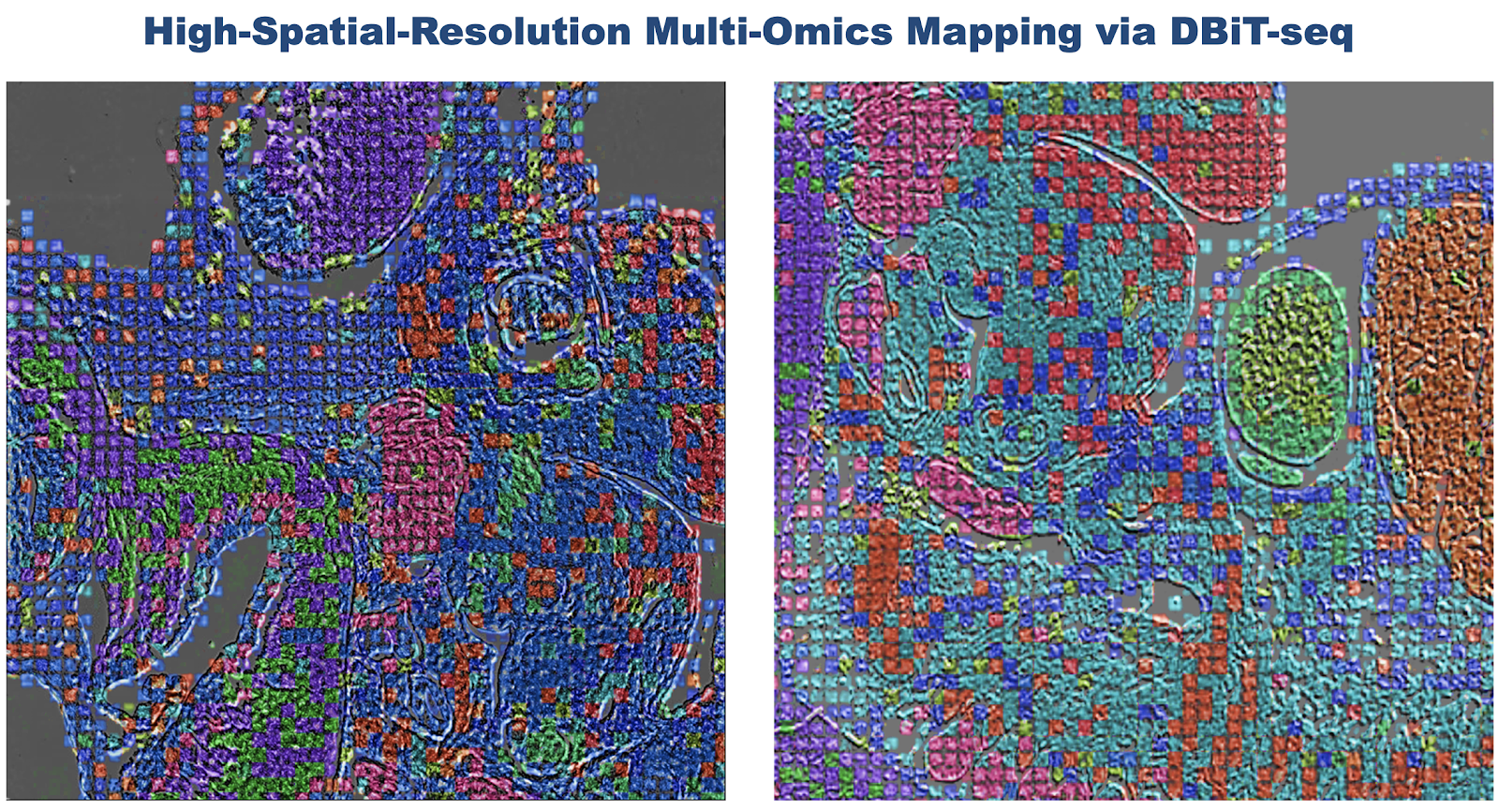Transformative Technology Development
High-spatial-resolution ECM-inclusive multi-omics sequencing of human PFA and FFPE tissue slides
This project focuses on the accelerated development of a high-spatial-resolution sequencing technology for the co-mapping of transcriptomes and proteomes (hsrTP-seq) via deterministic barcoding in tissue (DBiT), which will be validated with paraformaldehyde (PFA)-fixed and formalin-fixed paraffin-embedded (FFPE) human tissue specimens. This is a fundamentally new approach as compared to any existing spatial omics technologies. The core idea is to molecularly barcode RNAs, proteins, or other biomolecular information in tissues using a novel microfluidic in situ barcoding method. The tissue slide after barcoding remains morphologically intact but consists of a mosaic of tissue pixels, each of which has a distinct DNA barcode. The size of the pixels is as small as ~5-10μm, which is close to the size of individual cells. It is built upon the power of Illumina’s Next Generation Sequencing (NGS) systems to achieve significantly higher sample high-throughput, lower cost, and the elimination of laborious procedures for repeated single-molecule imaging. It will demonstrate high-spatial-resolution (~5-10μm pixel size), high-throughput (up to 100 tissue samples flow barcoded per day per operator), and high-content (genome-wide mRNAs, proteins, and non-cellular environment).
Using a panel of DNA-tagged antibodies against extracellular matrix (ECM) proteins, this approach further allows for spatial omics sequencing to include the mapping of non-cellular components, which are completely missing in scRNA- seq or current spatial transcriptomics technologies. It is uniquely suited for mapping human collagenous tissues including heart, aorta, skin, and kidney to improve our understanding of the role of ECM in normal physiology, disease and aging. In the UG3 phase, the group will develop a set of new devices to significantly increase the tissue mapping area (4mmx4mm), develop a proteome-scale (~500 proteins co-analyzed) and ECM-inclusive spatial sequencing, and develop a novel tissue optimization protocol performed on the same tissue slide for hsrTP-seq, and generate a set of 3D spatial transcriptome- proteome atlas data from human heart or aorta. In the UH3 phase, they will further develop a multi-pin injection head to increase sample throughput (up to 100 samples per day) and the mapping area (1.2cmx1.2cm) for further scale up and automation, develop a new in-tissue template switching method to retain intact tissue section after hsrTP-seq for conducting other measurements on the same tissue slide and constructing 3D tissue atlas, and finally develop an optimized PFA and FFPE tissue protocol to generate the 3D multi-omics tissue atlas data (>20 tissue sections per sample) from the human heart, aorta, skin, and kidney.

Fast Facts:
| Project title: | High-spatial-resolution ECM-inclusive multi-omics sequencing of human PFA and FFPE tissue slides |
| Organ specialty: | Heart, Aorta, Skin, and Kidney |
| PI: | Rong Fan |
| Co-Investigators: | George Tellides, Joseph Craft, and Yuval Kluger |
| Project Manager: | Archie Enninful |
| Assay types: | DBiT-seq, hsrTP-seq |
| Grant number: | 1UG3CA257393-01 |
| Learn more: | Visit the lab website, and follow them on Twitter. |
